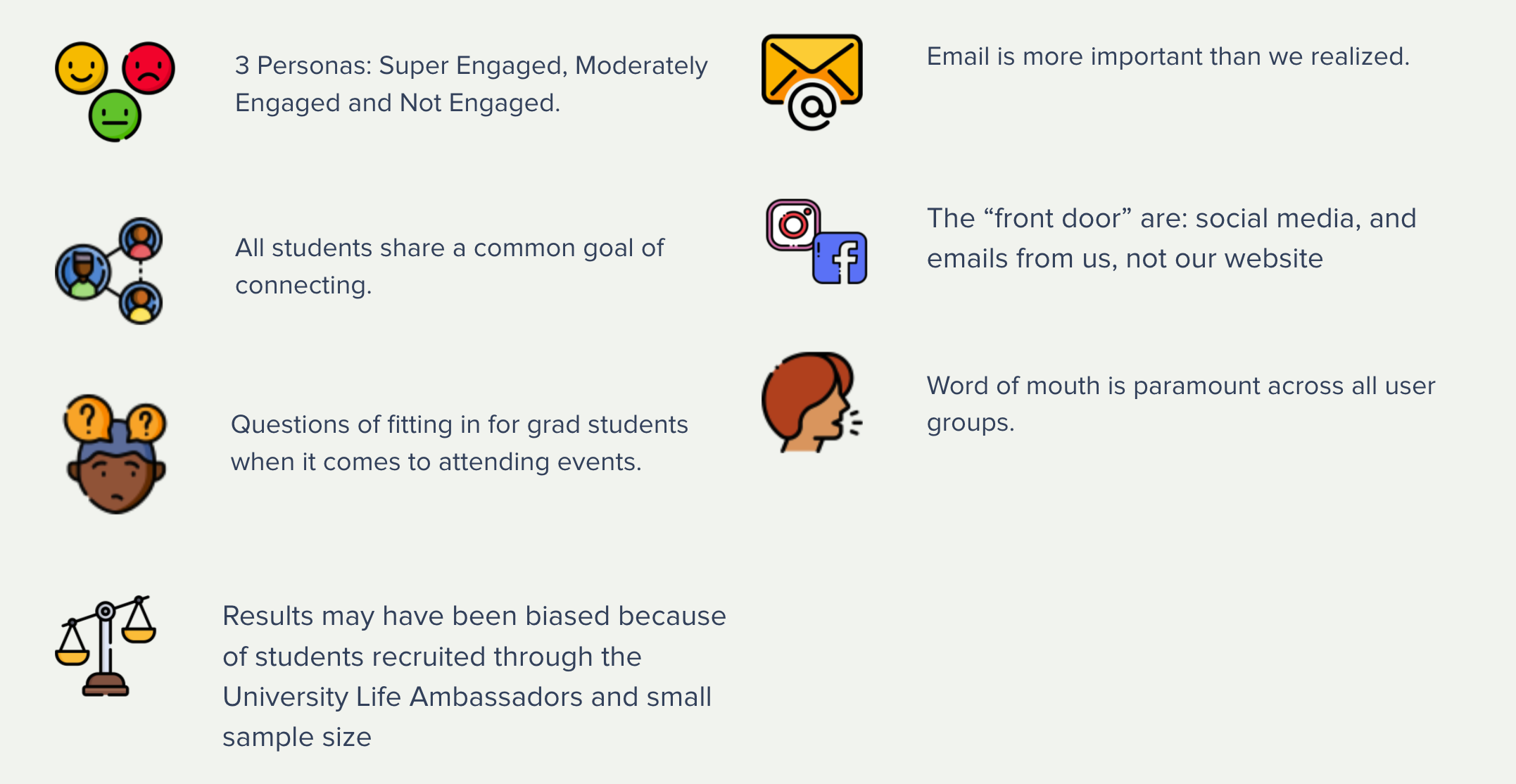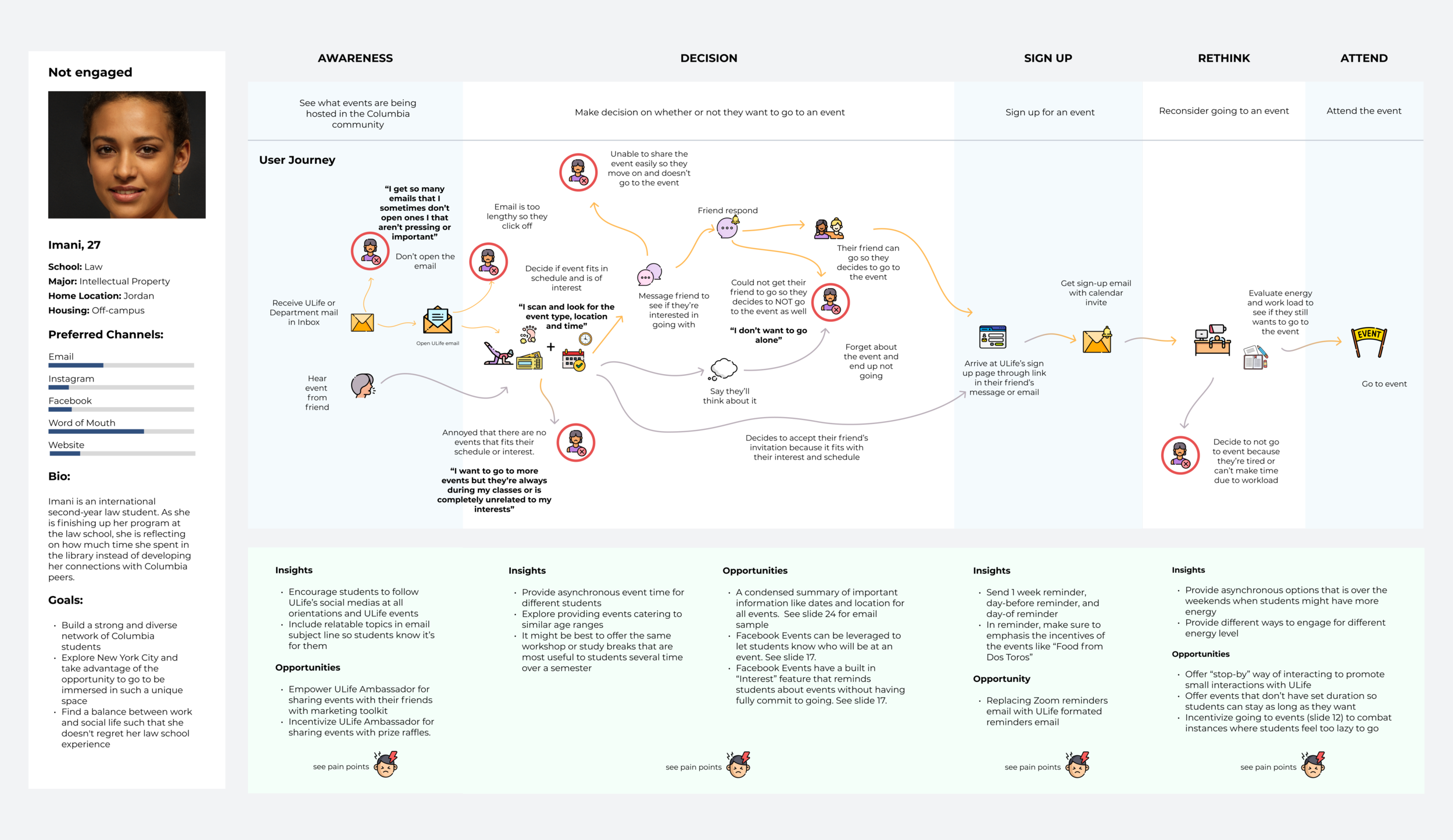How to Best Communicate with Students: Research on Student Engagement via Social Media and Email
Our client was interested in learning more about student behavior as they interacted with the Office of University Life (ULife). Different channels — like social media, email, or websites — were examined. The collected data informed the best way to target ULife campaigns.
Since another enterprise-level project at Columbia required us to map out the student journey, we partnered with ULife during the interviews to collect other features of the student experience.

Research
Due to budgetary and time constraints, we limited interviews to a small sample of users consisting of undergraduate and graduate students from traditional and nontraditional schools. Nontraditional students are defined as students who didn't attend college immediately after high school, not depending on the parents for financial support, and either work during the school year.
The interview questions consist of the following:
Work Summary
All the students we interviewed shared one common goal — meet and connect with new people. When we asked the students about the probability of attending a University event. Word of mouth was paramount across all user groups.
While most ULife events welcome a diverse range of students of all ages, graduate students were unsure if they would be welcome at some events hosted by ULife because of their age. Instead, they were most likely to attend an event hosted by their school or department.
User Personas and Their Journeys
Three user personas emerged based on the collected data.
Each of these users embarked on slightly different journeys. The super-engaged users will rally friends to join them for events, and they are most likely to share or post about their experience at the event.
Non-engaged users are most likely to attend an event if the topic is of particular interest, or if a friend also attends the event.
Our Recommendations
Most students are overwhelmed with emails from different organizations within the University throughout the day. The students were more likely to read emails from the school and the department to other groups, especially those emails sent from central administration. We recommended partnering with the school or department to include high-impact events in their newsletter and email outreach.
Personalization
To make followers of ULife social media accounts feel more engaged, like or reply to every student’s comment on your posts in a personalized way.
Ask our Ambassadors to commit to resharing emails or social media post 1X/month with a group of 50 friends to say "check out this great event i'm part of/going to/etc"
Strategic Outreach
Use targeted marketing to send invitations to people who've attended similar events in the past.
Have incentives for going to events and make it explicit.
If you go to 3 events in the school year, you can be entered to win a prize.
Continue raffles and free things at events when possible.
Platform Engagement
Leverage built-in platforms' features across all social media channels to increase engagement.
Post video content from events, show attendees engaging and participating in events. Instagram Stories and Reels are a good way to share video content.






